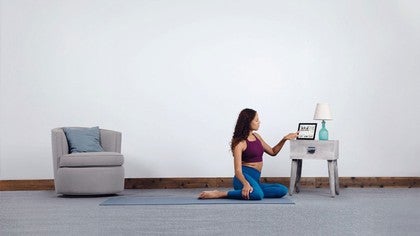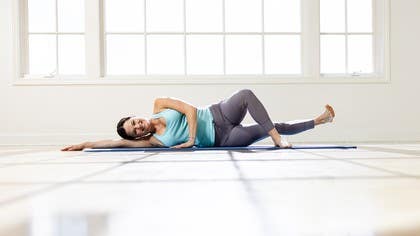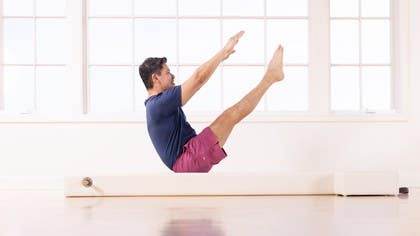
How to Keep Resolutions for Good
While it’s always a good time to resolve to change your life for the better, January is the most popular time to attempt new healthy habits (starting a fitness plan, beginning Pilates, overhauling your diet) and to break unhealthy ones (smoking, drinking alcohol, eating sugar). Sticking with those resolutions for the long haul is another story altogether.
It’s become a running joke - and yet a reality - that the majority of people who enthusiastically sign up to gyms and personal training in January have dropped their membership and become strangers to their trainers by March or April. The momentum and excitement of having made the resolution and going full bore loses its thrill a few months in. One reason for the springtime slump: change takes commitment and work. It’s not sexy to talk about sustainable resolutions over quick fixes. If you aim to succeed in sticking to the healthy habits you’ve decided on, here’s a guide.
1. Identify the obstacles and limitations that you’ll face.
First, consider what habits you want to change. Then consider the obstacles to making that change, and be realistic in how you might overcome those obstacles. Rather than making a big resolution like, “I’m going to train for an hour every single day,” despite the fact you work eight hours every day, resolve to do four hours of fitness training a week. Being realistic in your plan will ensure you have flexibility in how and when you achieve your goal.
2. Make resolutions that matter to you.
Secondly, decide what this resolution means to you and the people who care about you. Deciding to lose six pounds to look good in your skinny jeans might get you started on a fitness regime, but will that goal actually make you happy? More importantly, will it be enough to keep you training once you’ve achieved it – if you do? Make a longer-term resolve, and consider your values and what really matters to you.
What if you committed to a fitness plan because it will improve your emotional wellbeing and ensure you have the mental energy to work, train and be more present in your relationships with family, friends and colleagues? Further, what if you committed to Pilates because it will improve the way you stand, walk, sit and ultimately, how you feel once you stop slumping, hunching your shoulders and straining your lower back?
3. List how your resolution benefits the people who matter to you.
Perhaps you have children, grandchildren, nieces, nephews, or dogs that all require you to have energy and ability to run after them, carry them and nurture them. If you struggle to change for your own sake, resolve to make changes that benefit the people (human and furry) who need you.
4. Don't let fear stop you.
Fear of change is normal, but it doesn’t have to stop you. In a feature for LifeHack, Thai Nguyen outlined the 10 major obstacles that prevent us keeping our resolutions.
The first and major obstacle he identifies is fear of change. It’s human nature. We are creatures of habit and routine. How often do you eat the same breakfast, take the same route to work, watch the same television stations or holiday in the same place because you know it and it doesn’t cause you any anxiety to choose it?
While change may cause you fear and bring up doubts and vulnerability, the real question: is it worth it? And if it is, then in the famous words of a self-help guru, “Feel the fear, and do it anyway."
5. Accept that it will take time for your resolutions to show results.
The other major obstacle you’ll face is the desire for immediate results. Here, it really matters you choose your resolution based on a long term result that has genuine meaning for you. This is how you make a resolve that will sustain healthy habits and a fit lifestyle for the rest of your life, starting today. It takes time to evolve. Just as a tadpole doesn’t become a frog overnight, nor a butterfly emerge with glorious wings immediately – there is a natural process to follow in all change. All that matters is that you choose to change and you begin today.
I’ve made my resolution to start a Pilates routine, and I’m ready. What now?1. Write it all down.
Congratulations – part of your work is done already. Now, write down your resolution and why it matters to you in the short and longer term. Then, put your outline in a visible place you can return to when you lose some of the momenta that got you started.
2. Take baby steps.
Starting at the beginning stages of your resolution will prevent feelings of overwhelm and lack of accomplishment when attempting something too advanced. If your goal is to go vegan, start by eliminating eggs or dairy, not both at the same time. And, if your resolution is to begin Pilates, for example, start with the beginning and go from there. By building on foundations, you have a place to go back to when setbacks occur.
Pro tip: While the teachers on Pilates Anytime are capable of some impressive feats both on the Reformer and the Mat, all of them started as beginners, just like you and me. If Pilates is new to you – either completely or you feel like a beginner still – the Starter Series is ideal.
This curated playlist perfectly introduces Pilates basics and progresses you through classes to build on your knowledge. Join teachers, Kathryn Ross-Nash, Monica Wilson, Karen Sanzo and more to learn and master techniques that will change your body for life.
3. Respond positively to setbacks.
Failure happens; it’s how you respond that matters. We’ve all lapsed on the path to perfection. The only thing to know is that this is inevitable and it’s more important how you respond to a setback than the actual setback. Did you miss a week of classes, or eat a pack of gummy bears for breakfast? (Guilty!) Consider what caused this momentary glitch and assess what you can change so you can avoid the same mistake again. Then, get back on track. Read over the reasons you’re sticking to this resolution, and re-commit.
4. Don't go it alone - find support.
Know that making your resolutions known to people who can support you and joining a community of like-minded people will help you to feel you’re not alone and your challenges are shared by plenty of others. Get active on Pilates Anytime by commenting on videos, joining the forums and reading feedback from other users around the world. If you need a kickstart, try taking a Pilates Challenge along with others seeking to make a healthy change in their lives.
“A challenge really can kickstart you, not only physically but mentally too. By the end of the challenge, you have set some great fitness habits to continue with,” says Tracey Mallett. Her Kick It Up Challenge is a great place to start.
Change is scary - and inevitable. This is how you discover how strong you are. Don’t aim for no mistakes, no faults. Aim for progress. As Susan Jeffers says, feel the fear and do it anyway. Or, as Pilates Anytime teacher Mariska Breland says, “practice, not perfection.”
Comments
No comments yet. Be the first!













You need to be a subscriber to post a comment.
Please Log In or Create an Account to start your free trial.